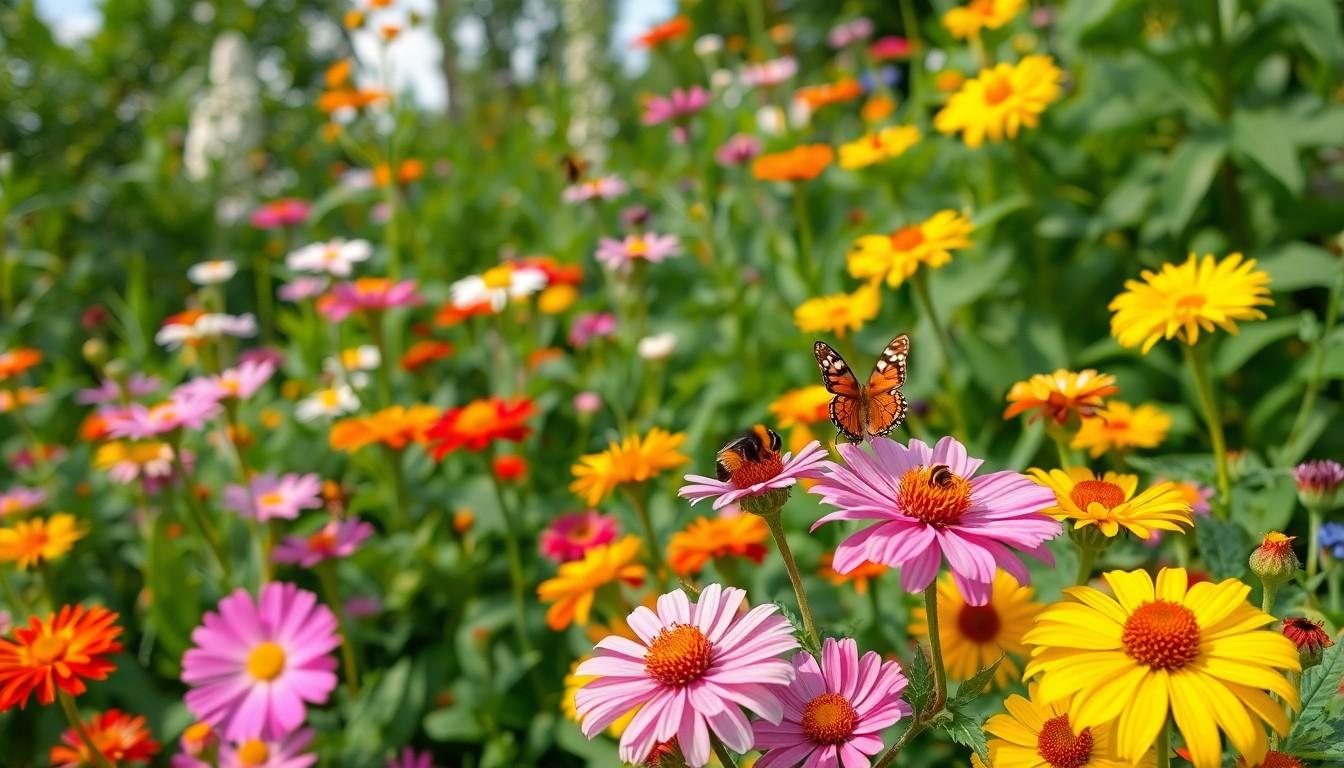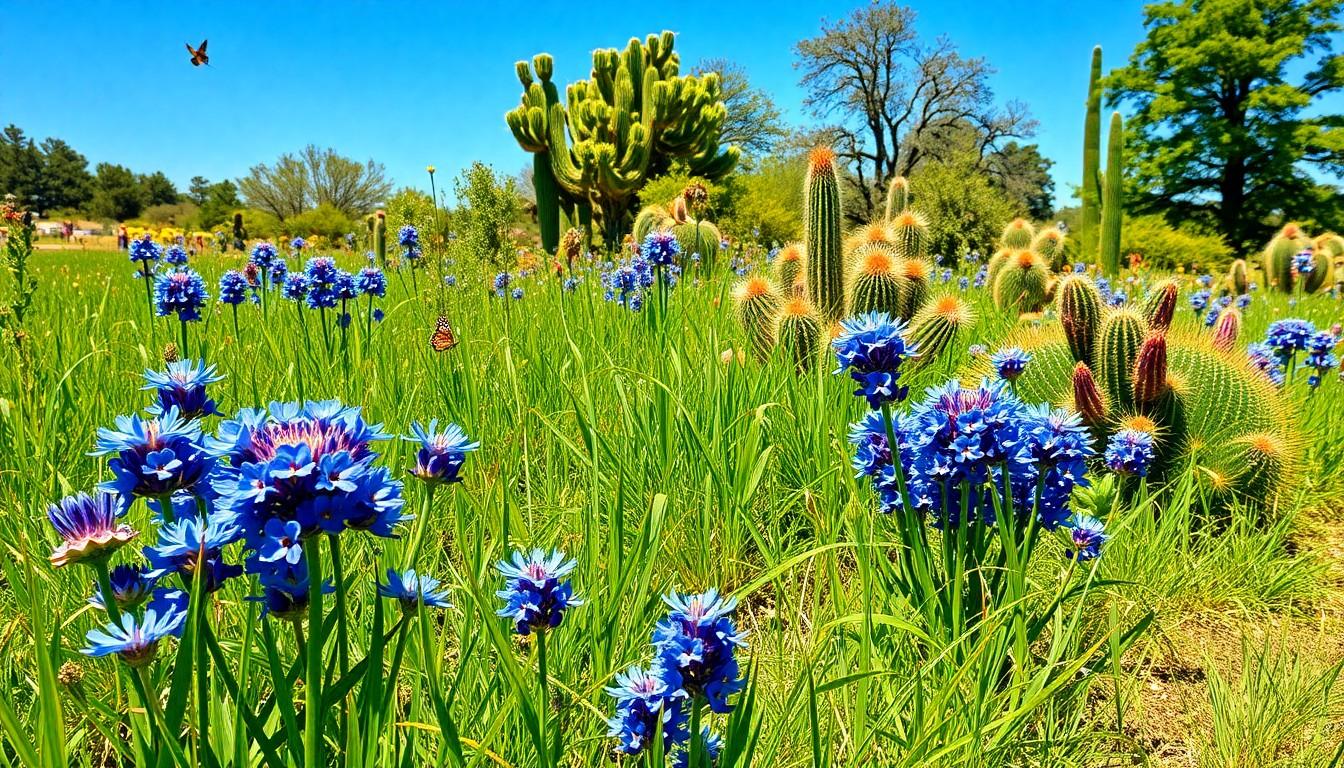In the sprawling landscapes of North Texas, a treasure trove of native plants thrives, just waiting to be discovered. These hardy flora are not only the unsung heroes of the ecosystem but also the perfect solution for anyone looking to add a splash of color to their yard without the constant drama of high-maintenance plants. Imagine a garden that practically takes care of itself—sounds like a dream, right?
From the vibrant bluebonnet to the resilient prickly pear, these plants are as tough as they are beautiful. They’re designed to withstand the Texas heat, making them ideal for anyone who’s ever tried to keep a houseplant alive (we’ve all been there). Embracing native plants isn’t just good for your garden; it’s a step towards supporting local wildlife and conserving water. So why not dive into the world of native North Texas plants and give your garden the glow-up it deserves?
Overview of Native North Texas Plants
Native plants thrive in North Texas, exhibiting high resilience and adaptability. The region’s climate, characterized by hot summers and moderate winters, fosters a diverse plant community. Species like bluebonnet, the state flower of Texas, display vibrant colors in spring. Prickly pear cactus adds both beauty and utility with its edible pads and fruits.
Gardening with native plants offers several advantages. Native species require less water than non-native varieties, making them ideal for drought-prone areas. They also support local wildlife, attracting pollinators such as bees and butterflies. Diverse habitats provided by these plants enhance ecological balance.
Many homeowners opt for native plants to reduce maintenance efforts. Once established, these plants typically require minimal care, thriving without synthetic fertilizers or pesticides. Their deep root systems improve soil health and reduce erosion, supporting sustainable landscaping practices.
A variety of native trees, shrubs, and grasses contribute to the region’s flora. Red oak and cedar elm provide shade and support diverse bird populations. In addition, the hardy grasses like little bluestem help stabilize soil and prevent weed growth.
Incorporating native plants into landscaping promotes sustainability. Not only do they enhance aesthetic appeal, but they also improve the local environment. Homeowners benefit from the natural beauty native plants offer while fostering biodiversity in their gardens.
Importance of Native Plants

Native plants play a crucial role in North Texas ecosystems. These plants adapt seamlessly to local conditions, thriving with minimal resources.
Ecological Benefits
Ecological advantages stem from using native plants. They support local wildlife by providing food and habitat. Pollinators, like bees and butterflies, benefit significantly from native flora. Many species rely on native plants for survival, which promotes biodiversity. Their root systems help improve soil health, reducing erosion and promoting water retention. Native plants also require less water than non-native varieties, making them important for sustainable gardening practices. These plants increase resilience against pests and diseases, reducing the need for chemical interventions.
Economic Benefits
Economic benefits of native plants include reduced landscaping costs. Homeowners save money on water bills, as these plants typically need less hydration. Maintenance expenses decrease significantly due to the plants’ low care requirements. Landscaping with native flora can increase property values, enhancing curb appeal. Local nurseries and garden shops often provide native plants, thus supporting the regional economy. Additionally, using native plants can decrease reliance on fertilizers and pesticides, leading to less spending on chemical products. Sustainable landscapes ultimately contribute to long-term economic savings for homeowners.
Popular Native North Texas Plants
Native North Texas plants thrive in local conditions, offering beauty, resilience, and ecological benefits. These plants not only require less maintenance but also support diverse wildlife.
Trees
Red oak grows tall and provides ample shade, making it a popular choice in landscapes. Cedar elm, known for its drought tolerance, enhances garden appeal while attracting local birds. These trees adapt well to the fluctuating temperatures and soil types characteristic of North Texas. Moreover, other native trees, such as pecan, contribute nuts that support local wildlife. Incorporating these species boosts property value and creates inviting outdoor spaces.
Shrubs
Texas sage stands out with its silvery foliage and vibrant purple blooms, ideal for adding color to gardens. American beautyberry, recognized for its striking purple berries, attracts birds and pollinators. These native shrubs require minimal water and maintenance, thriving in the hot climate. Additionally, yaupon holly provides year-round interest with its glossy leaves and red berries, offering habitat for small animals. By selecting these shrubs, homeowners create sustainable landscapes that benefit local ecosystems.
Wildflowers
Bluebonnet, Texas’ state flower, creates stunning displays across the landscape each spring. Indian paintbrush adds bright red hues, complementing the vibrant bluebonnet fields. These wildflowers attract bees, butterflies, and other pollinators, enhancing garden biodiversity. Additionally, coreopsis produces golden-yellow blossoms that thrive in dry conditions, making it an excellent choice for low-water gardens. Planting these native wildflowers fills gardens with color while supporting essential ecosystem functions.
Creating a Native Plant Garden
Creating a native plant garden involves thoughtful planning and maintenance to ensure success. Homeowners can design vibrant landscapes that attract wildlife and thrive in local conditions.
Site Selection
Selecting an appropriate site sets the foundation for a successful native plant garden. Observing sunlight and shade patterns helps determine the best location. Well-draining soil, rich in organic matter, fosters healthy plant growth. Choosing a spot away from areas prone to standing water promotes deep root development. Once the ideal site is chosen, homeowners can begin to visualize their garden design incorporating a variety of native plants that fit their selected environment.
Plant Care and Maintenance
Plant care for native species requires less effort than for non-native varieties. Monitoring soil moisture prevents overwatering and encourages root establishment. During the initial growth phase, occasional watering helps plants adapt. Mulching around plants aids in moisture retention and suppresses weeds. Each native species typically has unique growth habits; understanding these ensures proper spacing and reduces competition among plants. Fertilizers and pesticides usually remain unnecessary as these plants thrive naturally in their adapted environments. Regular observation allows gardeners to enjoy the evolving beauty of their native plant landscapes.
Resources for Native Plant Enthusiasts
Finding resources that support native plant gardening in North Texas enhances the experience for enthusiasts. The Texas Native Plant Society offers extensive information on native species and their habitats. Accessible online, their website provides guides and local events for plant lovers.
Gardening clubs, such as the North Texas Native Plant Society, connect members through workshops and plant swaps. These clubs often host lectures featuring experts in native flora, fostering community engagement and knowledge sharing.
Local extension services play a vital role in providing up-to-date information on native gardening practices. Texas A&M AgriLife Extension Service includes resources like newsletters, articles, and local events specifically focused on native plants, ensuring gardeners remain informed.
Plant nurseries specializing in native species, like the Native American Seed Company, offer a variety of native plants that thrive in the region. Shopping at these nurseries supports local businesses while providing options tailored to local ecosystems.
Conservation organizations, such as the Lady Bird Johnson Wildflower Center, focus on preserving native landscapes. Their extensive research library includes plant lists, guides, and tools for assessing ecological needs when selecting native plants for home landscapes.
Online resources, including blogs and discussion forums, allow for exchanging tips and experiences among native plant gardeners. Websites like iNaturalist offer platforms for identifying local species, thus enhancing the gardening journey.
Social media platforms host groups dedicated to native plant gardening, where members share experiences, photos, and advice. Engaging in these communities fosters inspiration and support among enthusiasts.
Conclusion
Embracing native North Texas plants offers a multitude of benefits for both the environment and homeowners. These resilient species not only thrive in local conditions but also support wildlife and enhance biodiversity. By choosing native plants, individuals can create stunning landscapes that require minimal care while conserving water and reducing maintenance costs.
The integration of native flora into gardens fosters ecological balance and promotes the health of local ecosystems. With resources available to guide enthusiasts, cultivating a native plant garden becomes an achievable and rewarding endeavor. Ultimately, the choice to incorporate native plants leads to beautiful outdoor spaces that are both sustainable and economically advantageous.

